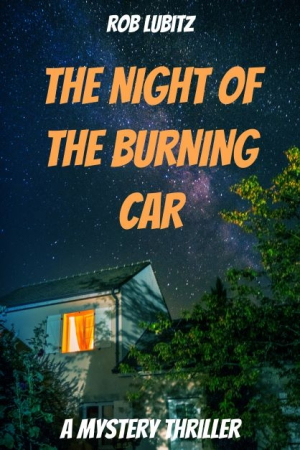
The Night of the Burning Car
The Night of the Burning Car is a dark, engrossing, and suspenseful novel; it follows mysteries whose resolutions audiences will crave.
Rob Lubitz’s engaging novel The Night of the Burning Car is set in a racially charged climate, with mysteries in both prewar and postwar periods.
The opening narrative is seductive. In 1948, Billy enters a bar to escape from reality, but the decision frames the rest of his life. Subjected to a possible scam, he flees, landing him at the center of someone else’s nightmare. He encounters a burning car with people inside. The vehicle explodes, leaving Billy in a coma. When he wakes, he’s told that there was no burning car, and he begins to wonder whether his dependency on alcohol led him to create a narrative to protect him from himself.
Billy’s question is one of the numerous inquiries that’s woven throughout the novel—a story that is ultimately directed by questions and secrets. Its chapters are short, and the narration moves between Billy’s story and Lacey’s earlier story, set in 1944. In total, the novel spans twenty-one years. Billy’s and Lacey’s interaction with the corrupt Harkins family is the connective thread. But as the story moves between timelines, its facts become blurred; a series of what-ifs and conspiracy theories emerges, and doubt takes root.
People’s emotions are a large part of the novel’s power. Captured in conversation and via vocal cues, body language, and details, they advance the story well. For example, Lacey expresses deep shock and horror at one point; she goes still and she stops breathing, feeling “like the world was fading into blackness.” These dramatic expressions ably align with the book’s sense of who Lacey is as a person. Elsewhere, fleeting thoughts, sensations like dizziness, and physical signals like excessive sweating further maximize the impact of people’s feelings and reactions.
As the book progresses, some of its secrets are revealed. Some lead to breathy, surprising twists; other secrets are revealed only in part, with the suggestion of further secrets left concealed. Thus, the book’s sense of suspense is continual; the questions of why certain elements of the story are not being revealed and what these unknown elements mean for the characters and their stories loom. But there are other prominent themes as well: the novel considers acceptance, right versus wrong, people’s choices, prejudice and racism, belief systems, the abuse of power, and corruption too. It asks whether there are times when the lines between justice and revenge can be blurred.
The Night of the Burning Car is a dark, engrossing, and suspenseful novel; it follows mysteries whose resolutions audiences will crave.
Reviewed by
Shari Marshall
Disclosure: This article is not an endorsement, but a review. The publisher of this book provided free copies of the book and paid a small fee to have their book reviewed by a professional reviewer. Foreword Reviews and Clarion Reviews make no guarantee that the publisher will receive a positive review. Foreword Magazine, Inc. is disclosing this in accordance with the Federal Trade Commission’s 16 CFR, Part 255.
